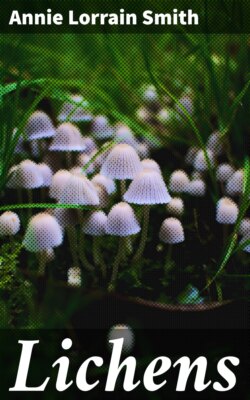Читать книгу Lichens - Annie Lorrain Smith - Страница 19
На сайте Литреса книга снята с продажи.
1. GONIDIA IN RELATION TO THE THALLUS A. Historical account of Lichen Gonidia
ОглавлениеThere have been few subjects of botanical investigation that have roused so much speculation and such prolonged controversy as the question of these constituents of the lichen plant. The green cells and the colourless filaments which together form the vegetative structure are so markedly dissimilar, that constant attempts have been made to explain the problem of their origin and function, and thereby to establish satisfactorily the relationship of lichens to other members of the Plant Kingdom.
In gelatinous lichens, represented by Collema, of which several species are common in damp places and grow on trees or walls or on the ground, the chains of green cells interspersed through the thallus have long been recognized as comparable with the filaments of Nostoc, a blue-green gelatinous alga, conspicuous in wet weather in the same localities as those inhabited by Collema. So among early systematists, we find Ventenat[152] classifying the few lichens with which he was acquainted under algae and hazarding the statement that a gelatinous lichen such as Collema was only a Nostoc changed in form. Some years later Cassini[153] in an account of Nostoc expressed a somewhat similar view, though with a difference: he suggested that Nostoc was but a monstrous form of Collema, his argument being that, as the latter bore the fruit, it was the normal and perfect condition of the plant. A few years later Agardh[154] claimed to have observed the metamorphosis of Nostoc up to the fertile stage of a lichen, Collema limosum. But long before this date, Scopoli[155] had demonstrated a green colouring substance in non-gelatinous lichens by rubbing a crustaceous or leprose thallus between the fingers; and Persoon[156] made use of this green colour characteristic of lichen crusts to differentiate these plants from fungi. Sprengel[157] went a step further in exactly describing the green tissue as forming a definite layer below the upper cortex of foliaceous lichens.
The first clear description and delimitation of the different elements composing the lichen thallus was, however, given by Wallroth[158]. He drew attention to the great similarity between the colourless filaments of the lichen and the hyphae of fungi. The green globose cells in the chlorophyllaceous lichens he interpreted as brood-cells or gonidia, regarding them as organs of reproduction collected into a “stratum gonimon.” To the same author we owe the terms “homoiomerous” and “heteromerous,” which he coined to describe the arrangement of these green cells in the tissue of the thallus. In the former case the gonidia are distributed equally through the structure; in the latter they are confined to a distinct zone.
Wallroth’s terminology and his views of the function of the gonidia were accepted as the true explanation for many years, the opinion that they were solely reproductive bodies being entirely in accordance with the well-known part played by soredia in the propagation of lichens—and soredia always include one or more green cells.
